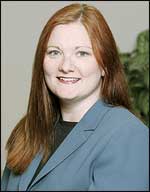
|
The first time I ever explored the Internet was in 1996. I didn?t really know what to look for, much less how to find anything, and I was clueless as to the power of this then-new tool. Now, 11 years later, I cannot live without the Internet. I use it for work and play, and I make it part of my everyday life. Millions of other people are exactly like me in this regard.
A healthy portion of us in the radiology field relies on the Internet daily, and the number of sites and tools geared just for medical imaging is growing all the time. For instance, in January, the American Roentgen Ray Society, Leesburg, Va, launched the GoldMiner image search engine, which is just what it sounds like: a search engine of radiology images. The images, which have been published in selected peer-reviewed journals, are searchable by findings, anatomy, imaging technique, and patient age and/or sex.
GoldMiner Creator Charles E. Kahn, Jr, MD, likens the new tool to a “PubMed for images: It searches by meaning, not just strings of letters.” In fact, that?s one of the best things about GoldMiner?it understands medical vocabulary as well as abbreviations, synonyms, and kinds of diseases. This tool, available at goldminer.arrs.org, can help with clinical work and diagnoses, as well as for physicians who are preparing one of their many lectures.
A similar tool debuted on January 5: Yottalook.com, a site from iVirtuoso Inc, Baltimore, is a search engine that retrieves radiology images from online peer-reviewed articles. I performed a search on “ankle fracture” and was provided with a wealth of links. Yottalook also allowed me to dig deeper, refining my results by modality, patient sex, patient age, illustrations, and histology. I also could link to images on Google, teaching files, PubMed, and the RSNA?s site, all of which garnered another handful of links tailored specifically to my search.
The site?which is covered in more detail in our “Informatics” section?is indexing almost 1 million Web pages already. According to Khan M. Siddiqui, MD, who is a member of the research and development team that built Yottalook, “This engine has the potential to take entire libraries of cutting-edge resources directly to radiologists in developing nations who previously would have had great difficulty in searching through the growing mass of information on the Web.” What a great idea!
Both GoldMiner and Yottalook, which are very similar search engines, are providing yet another valuable resource for radiologists, who are increasingly bombarded with more and more information?be it clinical study results, new products, emerging uses for technology, reimbursement changes, workflow changes, and the like, all in the face of budget cuts across the board and a staffing shortage. We all feel overwhelmed at work, and these two new tools can help make imaging professionals? research?and maybe even diagnoses?a lot easier.
Not to be left out, we at Medical Imaging strive to provide you with the most concise and relevant product and technology information in radiology today. Over the past several months, you?ve probably noticed a little box on a handful of pages throughout the magazine labeled “Cyber Content.” These boxes point to editorial content that?s exclusively online. We have three such stories in this issue alone; they accompany our features on military imaging and power supplies, as well as in our “Informatics” section.
You?ll find that our Web site is a centrally located resource of information, from our monthly magazine posted online and our daily news posts to our monthly Web polls and Medical Imaging News (MIN), the latter of which is our weekly e-newsletter that?s approaching its 1-year birthday on March 15. The complete archives to MIN are available online as well.

Andi Lucas, editor




